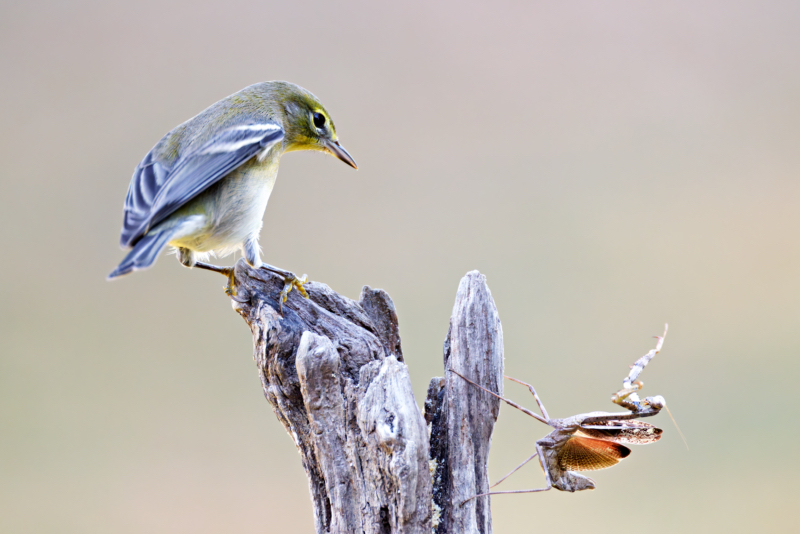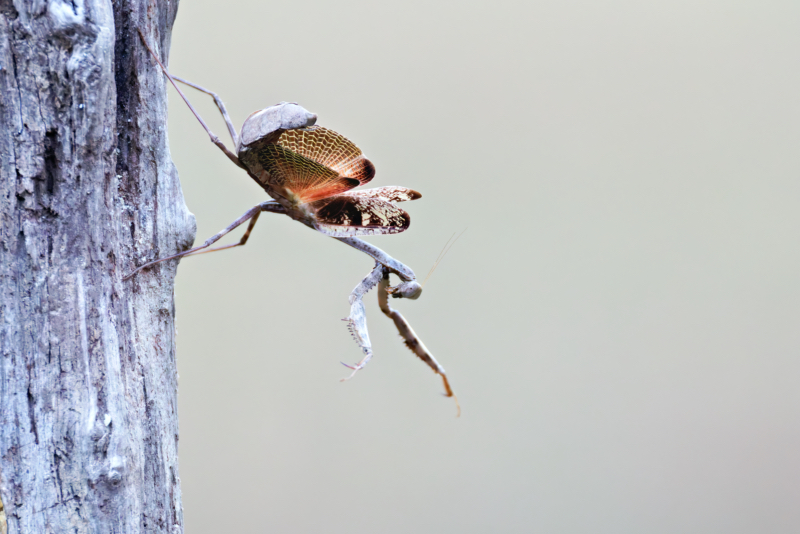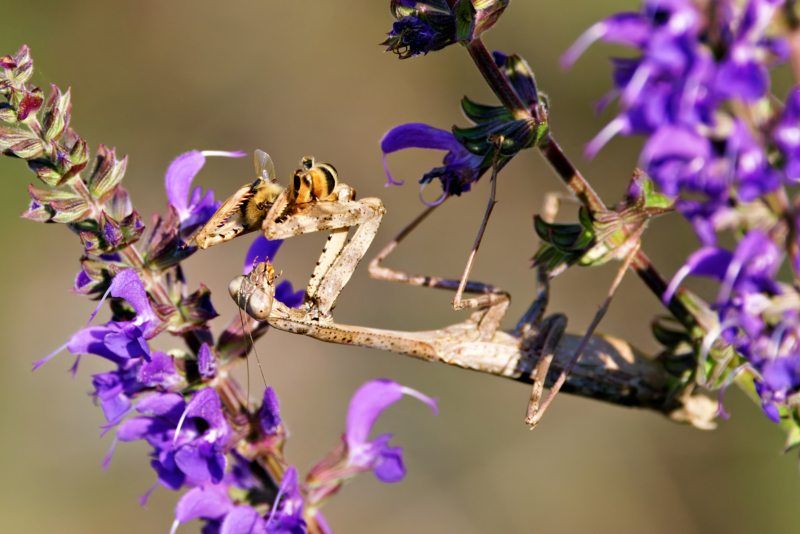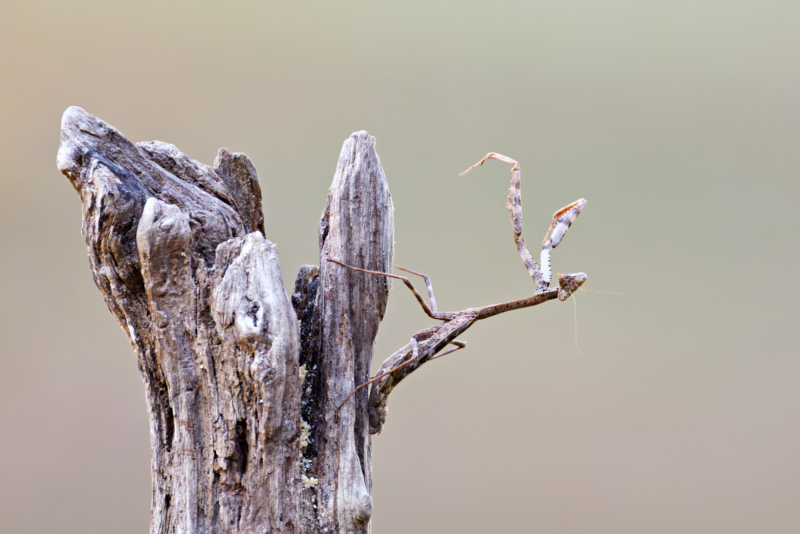On the first day of October, I had an amazing encounter right in my own backyard, one that showcased the Carolina Mantis in all its predatory prowess. This small, unassuming insect, perched on a piece of wood I had set up for birds next to my flower garden, turned an ordinary morning into a fascinating lesson on the delicate balance of nature.
A Startling Defense: The Mantis vs. the Birds
It all began while I was watching from my deck. The mantis was perfectly camouflaged, blending in with the weathered wood I use to hold suet for the birds that frequent my yard. At first, it seemed content to stay still, a master of patience. But when one of the birds swooped a bit too close, the mantis reacted in a way that took me by surprise.

In an instant, its wings flared, and it raised its foreleg defensively, making itself appear much larger and more menacing. This impressive display, known as a deimatic response, is something mantises use to ward off potential threats. Even from a distance, I could sense the tension, as though the mantis was telling the bird, “Too close for comfort!”
The bird quickly backed off, and the mantis, satisfied with its success, returned to its stillness. This was the first time I’d ever seen a mantis react this way in my yard, and it only added to my appreciation for these highly adaptable insects.

A Shift to Predator Mode: The Hunt Begins
As the morning wore on, the Carolina Mantis dropped to the ground, moving with a deliberate and calculated pace. From there, it climbed up one of the flowers near my garden, positioning itself just right—ready for its next move.

Sure enough, it didn’t take long for the first honey bee to make the fatal mistake of coming too close. With lightning-fast reflexes, the mantis snatched the bee from mid-air using its raptorial forelegs, which are equipped with sharp spines to keep prey firmly in its grasp. I managed to snap a quick photo just as the mantis devoured its meal, completely absorbed in its role as a predator.
It wasn’t done yet. A second bee, unaware of the predator lurking nearby, met the same fate. Watching this scene unfold gave me a deep respect for the mantis’s efficiency and precision. Despite its small size, it is an incredibly effective hunter, an insect built for ambush and survival.
The Carolina Mantis: More Than Just a Backyard Visitor
Seeing the Carolina Mantis in action reminded me how complex and vital these creatures are to the ecosystem. Their ability to blend into their surroundings with near-perfect camouflage makes them exceptional predators, while their defensive behaviors, like the one I witnessed with the bird, help them survive against larger threats.

However, as beneficial as the Carolina Mantis is for controlling pests, it also plays a more intricate role in the balance of nature. This mantis, for example, didn’t discriminate between a honey bee, which is crucial for pollination, and other insects. It’s a generalist predator, and this feeding behavior keeps ecosystems balanced, even if it means occasionally preying on beneficial insects.
Final Thoughts
This encounter with the Carolina Mantis was a vivid reminder of the wonders of nature, even in our own backyards. Watching it seamlessly shift between defense and predation, and witnessing firsthand how it maintains the delicate balance between survival and hunting, left me in awe.
Nature, after all, never wastes a moment to remind us that every creature, no matter how small, has a vital role to play. And sometimes, those lessons come from the most unexpected places, like a mantis perched on a piece of wood outside my window.
